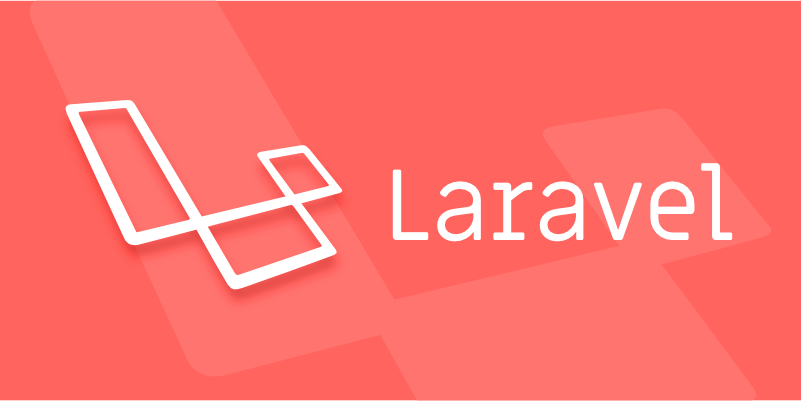Ensure Laravel 9 and PHP 8.0 are used, as Vite is supported out of the box; upgrade if on an older version. 2. Install Vite and required plugins via npm install or manually add vite and laravel-vite-plugin if missing, along with framework-specific plugins like @vitejs/plugin-react or @vitejs/plugin-vue. 3. Create or update vite.config.js to include the laravel plugin with input paths for CSS and JS entry points and enable features like HMR. 4. Replace @mix or hardcoded asset tags in Blade templates with the @vite directive listing the same entry points, allowing automatic dev server integration and production path resolution. 5. Update package.json scripts to include "dev": "vite", "build": "vite build", and "preview": "vite preview" for standard workflow operations. 6. Run npm run dev to start the Vite development server with HMR or npm run build to compile optimized assets to public/build/, where Laravel reads the manifest for correct asset injection. 7. Optionally configure framework support (React/Vue) by installing respective dependencies, updating the config with the appropriate plugin, and adjusting file extensions and imports accordingly. 8. Customize Vite server settings like host and port in the config or via .env.local, especially for Docker or shared environments by setting host: '0.0.0.0' and adjusting HMR settings. The @vite directive seamlessly handles both development and production environments, leverages native ES modules, and eliminates the need for Laravel Mix, resulting in a faster, more scalable build process that integrates smoothly with modern frontend workflows.

Setting up Vite in a Laravel project is straightforward, especially if you're using Laravel 9 or later, which supports Vite out of the box. Here’s how to do it properly and start using modern frontend tooling with your Laravel app.

? 1. Check Laravel and PHP Version
Make sure you're using Laravel 9 and PHP 8.0 . Vite replaced Laravel Mix starting from Laravel 9, so older versions will need to be upgraded or manually configured.
If you're on Laravel 8 or earlier, consider upgrading or installing Vite manually (not recommended — better to upgrade Laravel).

? 2. Install Vite via npm
Run this command in your Laravel project root:
npm install
This installs the default dependencies, including vite, laravel-vite-plugin, and @vitejs/plugin-react or similar, depending on your setup.

If Vite isn't installed (e.g., in older projects), add it:
npm install --save-dev vite laravel-vite-plugin
Also install the required plugin for your frontend framework (optional):
# For React npm install --save-dev @vitejs/plugin-react # For Vue npm install --save-dev @vitejs/plugin-vue
? 3. Configure Vite with Laravel Plugin
Create a vite.config.js file in your project root (if not already present):
// vite.config.js
import { defineConfig } from 'vite';
import laravel from 'laravel-vite-plugin';
export default defineConfig({
plugins: [
laravel({
// Specify your entry points
input: ['resources/css/app.css', 'resources/js/app.js'],
refresh: true,
}),
],
// Optional: If you're using React or Vue
// resolve: {
// alias: {
// '@': '/resources/js',
// },
// },
});This tells Vite where your main CSS and JS files are located.
? 4. Update Blade Templates to Use @vite
In your main layout file (e.g., resources/views/layouts/app.blade.php), replace any old Mix calls like @mix or hardcoded script tags with:
@vite(['resources/css/app.css', 'resources/js/app.js'])
This directive:
- Loads the Vite dev server during
npm run dev - Outputs correct build paths in production
- Handles hot module replacement (HMR) automatically
? You only need to list the entry points — Vite will resolve the rest via imports.
? 5. Update package.json Scripts
Make sure your package.json has the correct scripts:
"scripts": {
"dev": "vite",
"build": "vite build",
"preview": "vite preview"
}Or, if you want Laravel-specific naming:
"scripts": {
"dev": "vite",
"build": "vite build",
"serve": "vite preview"
}? 6. Start Dev Server or Build for Production
During development:
npm run dev
This starts the Vite development server (usually on http://localhost:5173) and enables HMR.
For production build:
npm run build
This compiles and minifies assets into public/build/.
Laravel automatically reads the manifest file generated by Vite (
public/build/.vite/manifest.json) to inject correct asset URLs.
? 7. Optional: Use Aliases or Frameworks
React Example
Install React support:
npm install react react-dom
Update vite.config.js:
import react from '@vitejs/plugin-react';
export default defineConfig({
plugins: [
laravel({
input: ['resources/js/app.jsx'],
refresh: true,
}),
react(),
],
});Then use .jsx files and import React normally.
Vue Example
import vue from '@vitejs/plugin-vue';
export default defineConfig({
plugins: [
laravel({
input: 'resources/js/app.js',
}),
vue({
template: {
transformAssetUrls: {
base: null,
includeAbsolute: false,
},
},
}),
],
});? 8. Environment & URL Handling
If you need to customize the Vite server host or port, create a .env.local or update Vite config:
export default defineConfig({
server: {
host: 'localhost',
port: 5173,
hmr: {
host: 'localhost',
},
},
plugins: [...],
});For shared environments (like Valet or Docker), you may need to set host: '0.0.0.0' and adjust hmr.host.
Final Notes
- The
@viteBlade directive is smart — it works in both dev and production. - No need to run
php artisan servealongside Vite unless you're testing backend routes. - Use
import/exportsyntax in your JS — Vite supports ES modules natively. - Don’t forget to commit
public/build/in production deployments (or build on deploy).
That’s it! You now have a modern, fast frontend build system integrated with Laravel using Vite. It's faster than Webpack, has instant HMR, and scales better.
Basically: install, configure entry points, use @vite, and run npm run dev.
The above is the detailed content of How to set up Vite in a Laravel project?. For more information, please follow other related articles on the PHP Chinese website!

Hot AI Tools

Undress AI Tool
Undress images for free

Undresser.AI Undress
AI-powered app for creating realistic nude photos

AI Clothes Remover
Online AI tool for removing clothes from photos.

Clothoff.io
AI clothes remover

Video Face Swap
Swap faces in any video effortlessly with our completely free AI face swap tool!

Hot Article

Hot Tools

Notepad++7.3.1
Easy-to-use and free code editor

SublimeText3 Chinese version
Chinese version, very easy to use

Zend Studio 13.0.1
Powerful PHP integrated development environment

Dreamweaver CS6
Visual web development tools

SublimeText3 Mac version
God-level code editing software (SublimeText3)

Hot Topics
 Creating Custom Validation Rules in a Laravel Project
Jul 04, 2025 am 01:03 AM
Creating Custom Validation Rules in a Laravel Project
Jul 04, 2025 am 01:03 AM
There are three ways to add custom validation rules in Laravel: using closures, Rule classes, and form requests. 1. Use closures to be suitable for lightweight verification, such as preventing the user name "admin"; 2. Create Rule classes (such as ValidUsernameRule) to make complex logic clearer and maintainable; 3. Integrate multiple rules in form requests and centrally manage verification logic. At the same time, you can set prompts through custom messages methods or incoming error message arrays to improve flexibility and maintainability.
 Adding multilingual support to a Laravel application
Jul 03, 2025 am 01:17 AM
Adding multilingual support to a Laravel application
Jul 03, 2025 am 01:17 AM
The core methods for Laravel applications to implement multilingual support include: setting language files, dynamic language switching, translation URL routing, and managing translation keys in Blade templates. First, organize the strings of each language in the corresponding folders (such as en, es, fr) in the /resources/lang directory, and define the translation content by returning the associative array; 2. Translate the key value through the \_\_() helper function call, and use App::setLocale() to combine session or routing parameters to realize language switching; 3. For translation URLs, paths can be defined for different languages ??through prefixed routing groups, or route alias in language files dynamically mapped; 4. Keep the translation keys concise and
 Working with pivot tables in Laravel Many-to-Many relationships
Jul 07, 2025 am 01:06 AM
Working with pivot tables in Laravel Many-to-Many relationships
Jul 07, 2025 am 01:06 AM
ToworkeffectivelywithpivottablesinLaravel,firstaccesspivotdatausingwithPivot()orwithTimestamps(),thenupdateentrieswithupdateExistingPivot(),managerelationshipsviadetach()andsync(),andusecustompivotmodelswhenneeded.1.UsewithPivot()toincludespecificcol
 Sending different types of notifications with Laravel
Jul 06, 2025 am 12:52 AM
Sending different types of notifications with Laravel
Jul 06, 2025 am 12:52 AM
Laravelprovidesacleanandflexiblewaytosendnotificationsviamultiplechannelslikeemail,SMS,in-appalerts,andpushnotifications.Youdefinenotificationchannelsinthevia()methodofanotificationclass,andimplementspecificmethodsliketoMail(),toDatabase(),ortoVonage
 Understanding and creating custom Service Providers in Laravel
Jul 03, 2025 am 01:35 AM
Understanding and creating custom Service Providers in Laravel
Jul 03, 2025 am 01:35 AM
ServiceProvider is the core mechanism used in the Laravel framework for registering services and initializing logic. You can create a custom ServiceProvider through the Artisan command; 1. The register method is used to bind services, register singletons, set aliases, etc., and other services that have not yet been loaded cannot be called; 2. The boot method runs after all services are registered and is used to register event listeners, view synthesizers, middleware and other logic that depends on other services; common uses include binding interfaces and implementations, registering Facades, loading configurations, registering command-line instructions and view components; it is recommended to centralize relevant bindings to a ServiceProvider to manage, and pay attention to registration
 Understanding Dependency Injection in Laravel?
Jul 05, 2025 am 02:01 AM
Understanding Dependency Injection in Laravel?
Jul 05, 2025 am 02:01 AM
Dependency injection automatically handles class dependencies through service containers in Laravel without manual new objects. Its core is constructor injection and method injection, such as automatically passing in the Request instance in the controller. Laravel parses dependencies through type prompts and recursively creates the required objects. The binding interface and implementation can be used by the service provider to use the bind method, or singleton to bind a singleton. When using it, you need to ensure type prompts, avoid constructor complications, use context bindings with caution, and understand automatic parsing rules. Mastering these can improve code flexibility and maintenance.
 Strategies for optimizing Laravel application performance
Jul 09, 2025 am 03:00 AM
Strategies for optimizing Laravel application performance
Jul 09, 2025 am 03:00 AM
Laravel performance optimization can improve application efficiency through four core directions. 1. Use the cache mechanism to reduce duplicate queries, store infrequently changing data through Cache::remember() and other methods to reduce database access frequency; 2. Optimize database from the model to query statements, avoid N 1 queries, specifying field queries, adding indexes, paging processing and reading and writing separation, and reduce bottlenecks; 3. Use time-consuming operations such as email sending and file exporting to queue asynchronous processing, use Supervisor to manage workers and set up retry mechanisms; 4. Use middleware and service providers reasonably to avoid complex logic and unnecessary initialization code, and delay loading of services to improve startup efficiency.
 Handling exceptions and logging errors in a Laravel application
Jul 02, 2025 pm 03:24 PM
Handling exceptions and logging errors in a Laravel application
Jul 02, 2025 pm 03:24 PM
The core methods for handling exceptions and recording errors in Laravel applications include: 1. Use the App\Exceptions\Handler class to centrally manage unhandled exceptions, and record or notify exception information through the report() method, such as sending Slack notifications; 2. Use Monolog to configure the log system, set the log level and output method in config/logging.php, and enable error and above level logs in production environment. At the same time, detailed exception information can be manually recorded in report() in combination with the context; 3. Customize the render() method to return a unified JSON format error response, improving the collaboration efficiency of the front and back end of the API. These steps are






